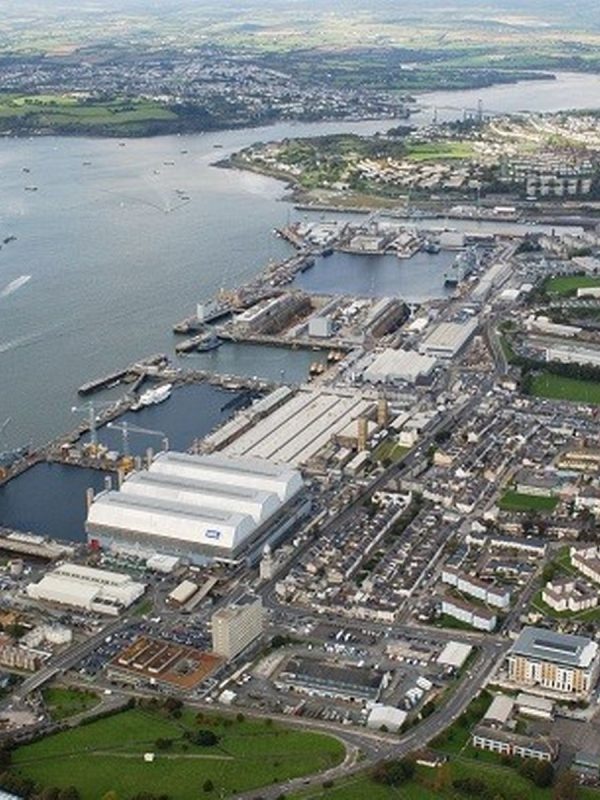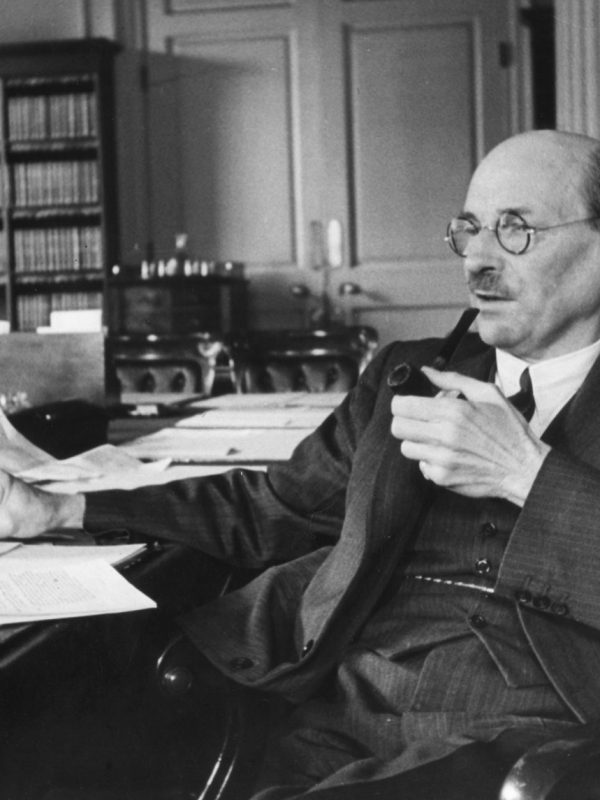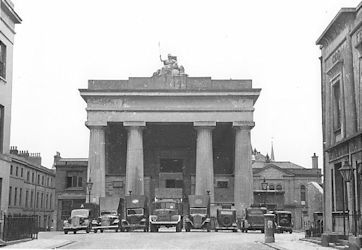I suppose you could say that growing up in Keyham was pleasant and in many ways. In a community with spirit because of the strength of both religion and politics. There was also a strong spirit amongst “Dockyardies”, (those who worked there) and that could sometimes be shown as almost unique dark humour only known inside the walls of the place. As a nine year old life had settled into a regular sort of routine. Religion through the week with Mass and Communion the core reaching a contented sort of spirit on a Sunday as if the week had been worthwhile. School with the looming 11+ coming ever closer and detailed schooling, Sister Austin teaching Penmanship as it was known then, but really it was just clear writing classes. She would have three lines across the pages or the blackboard and you had to keep your letters up to the first level, top level for “t l b d” etc with the round bits exactly to the first level. You were in serious trouble if it was scruffy. I also recall some classmates were left-handed and this was not encouraged, in fact it was deemed wrong and there were some confrontations with some parents over the ferocity the Sisters dispensed if they thought you were defying them. I have often wondered if those classmates had problems in later life over that, although I hope not.
So many people I have mentioned here were good friends of both Mum and Dad and that created a mixture of religious,political and neighbours who brought a range of opinions and views to life in Keyham and in many ways they all came together as a community if any changes or issues affecting the community came there was usually a united front. It was for me the first time I had seen or experienced that and in some ways was reassuring to a boy of nine that this could happen.
I can recall one annual event that was always something to look forward to. I think it was around Autumn time when nights were pulling in. Aunty Vera lived in Wombwell Cresc with Grandma Riggs and Uncle Ernie who worked in Dockyard and stayed at Wombwell for some of the time. The military started conducting annual mock attacks on the Naval barracks and base. The Royal Marines were tasked get into both by whatever means and claim a victory while the Royal Navy was tasked with stopping this happening. Sailors and Marines were armed although only firing blanks. At the back of Wombwell beyond the allotments was the firefighting site with parts were regularly set ablaze so the practice of firefighting aboard could be accurately enacted. Right next to and almost under “Shaky bridge “carrying the main Penzance to London Trainline it was an entry point for a marine attack through the creek at Camel’s Head. Bursts of gunfire indicated action and huge movement of bodies suddenly appearing from the base this would go on during the day but more intensely at night.
I can always recall Uncle Ernie moaning when delayed leaving work and late home that it was because “Bloody military playing bloody cowboys and Indians again”. For a nine year old it was quite exciting and always wanted to be at Grandma’s as long as possible. Apparently the Marines did some clever manoeuvres in lorries going into the Dockyard and under lorries so much that in these exercises all vehicles were stopped and searched throughly. I think the Marines did get in a few times to claim victory.
Tag: atlee
-

Dockyardies
-

Atlee
Correcting as I go I typed the wrong name of one of Harry Wright’s walking/photography group it should have been Fred Stott. He was another strong Methodist laypreacher who was the Personel Manager at the Dockyard and served as a Ward Councillor for the Efford Ward up to the early eighties.
As deputy Leader of the Labour Group, his passion was the Museum service and served on the Local Government National Museum Committee for many years. He was a very forceful orator and it was always a morolistic approach. It was where I heard about the inequality of access to opportunity for our people first being voiced by someone with whom it was very difficult to debate with from the purity of the line about fairness for everyone.
More about Fred and the others who formed the Labour Council in 1945 and their experiences in rebuilding the City with the Atlee government later. A number of the group played role beyond local government, demanding though that was, in the development of the NHS,and the nationalised electricity and gas services where the structures and control management that was needed was similar to local government, particularly in the accountability areas. -

Personalities Continued..
Sitting at the back of Victory Hall waiting for my parents did let me see a variety of characters. Doc Miles from Ernesettle was one, an early practitioner in the new NHS. He had an enormous number of patients and almost all poor. He would always come late and sit near me having been on call. He would find bits of paper from his pockets and would meticulously roll them into perfect balls and seek to log them down a series of knotholes in the dancefloor with deep concentration. But he was obviously following the meeting he’d suddenly shoot up and express a most passionate argument and then sit down returning to knothole filling.
Harry Wright was a simple boilermaker in the Dockyard but like all his Methodist colleagues he was a brilliant figures man. He could talk through a Council budget in a clear way committee by committee without notes and make it interesting and bear in mind in those days computers weren’t heard of so it was pure knowledge that made him so good.
He also set up the Devonport Supply Society which ran a drapery and clothing shop under the Hall in the ope.Many people paid in so much each week and could buy clothes,shoes and most importantly coal in the winter.If enough people joined Harry could buy a couple of lorryloads and have them delivered to individual homes at quite a saving for someone buying on their own.He had an office above the corner shop which was owned by the society and at one time was a Lipton’s store quite large.
Tim Harvey was a local Councillor and was a chemist in Station Rd and a huge advocate and supporter of the new NHS along with Scotsman Peter Ross another Councillor living in North Down Gardens next door to the Coop shop.Also in the actual park was a terrace of houses which house Betty Batchelor and her Mum Mrs Reeby and next door Mary Jago a Catholic both would become Councillors for Ford along with Dorothy Briscoa who lived in Warleigh AVE next to the tunnel to the Ford Hotel.
On the Conservative side there was a lady called Mrs Grafton who stood for the Tories time after time and in bad years came close to winning and I can’t recall if she ever did win an election but she was well known and was quite a fighter.
Harry Wright was quite a rambler in the countryside along with Best Harris the City Librarian they along with Fred Story would bring slideshows of their walks around the city to show communities some of the places perhaps noone had heard of before.In the top of the canteen wall they put a ledge and a hole for the projector to show the slides.Bearing in mind no one had cars at this time unless you were wealthy it was always well attended and hopefully many made a visit to some of the spots when they were able get a car.These were very popular meetings as many as 100+would attend.